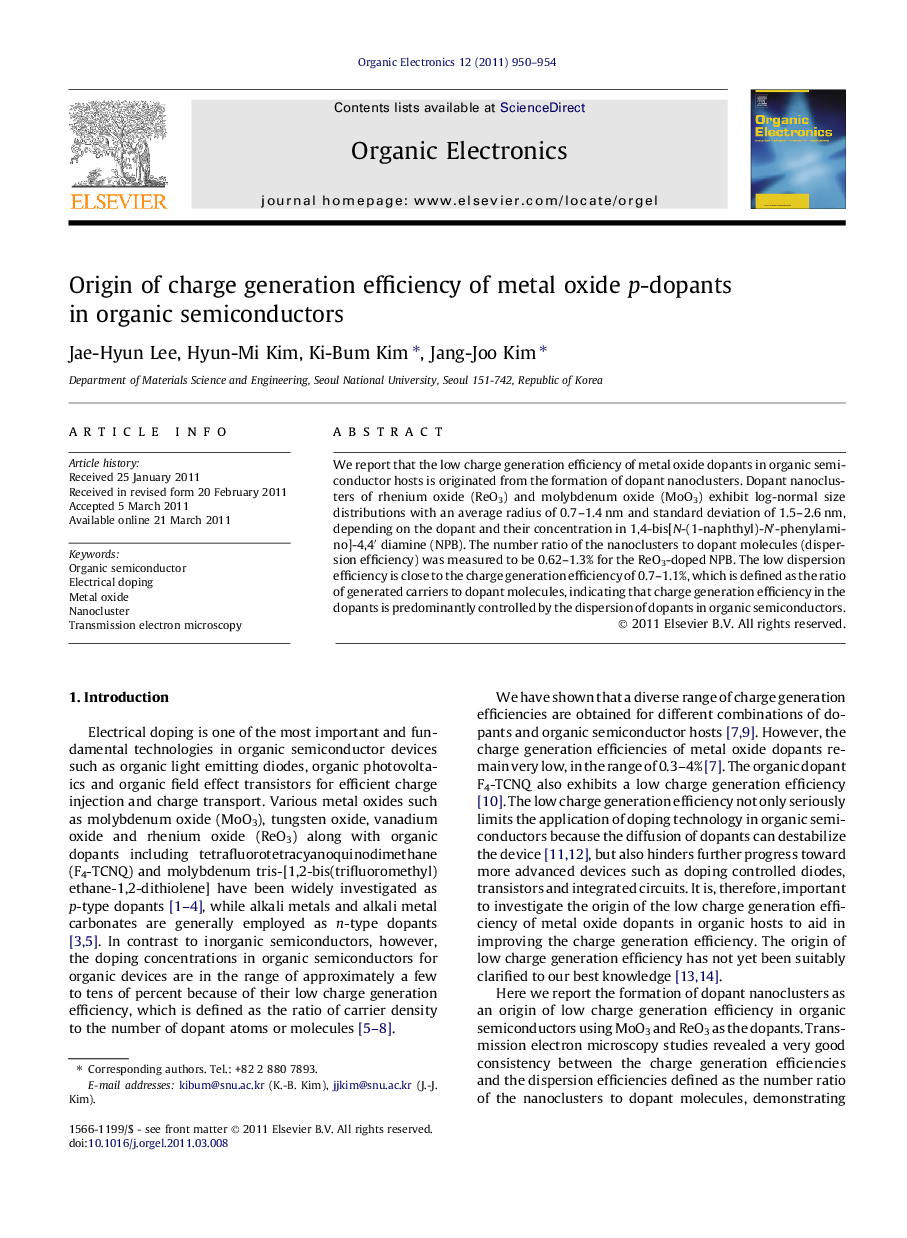| Article ID | Journal | Published Year | Pages | File Type |
|---|---|---|---|---|
| 1267689 | Organic Electronics | 2011 | 5 Pages |
We report that the low charge generation efficiency of metal oxide dopants in organic semiconductor hosts is originated from the formation of dopant nanoclusters. Dopant nanoclusters of rhenium oxide (ReO3) and molybdenum oxide (MoO3) exhibit log-normal size distributions with an average radius of 0.7–1.4 nm and standard deviation of 1.5–2.6 nm, depending on the dopant and their concentration in 1,4-bis[N-(1-naphthyl)-N′-phenylamino]-4,4′ diamine (NPB). The number ratio of the nanoclusters to dopant molecules (dispersion efficiency) was measured to be 0.62–1.3% for the ReO3-doped NPB. The low dispersion efficiency is close to the charge generation efficiency of 0.7–1.1%, which is defined as the ratio of generated carriers to dopant molecules, indicating that charge generation efficiency in the dopants is predominantly controlled by the dispersion of dopants in organic semiconductors.
Graphical abstractBinary-treated, inverted high angle annular dark field image of MoO3 and ReO3 dopants in organic hosts reveals the formation of nanoclusters of the dopants, leading to non-homogeneous dispersion and low charge generation efficiency of the dopants.Figure optionsDownload full-size imageDownload as PowerPoint slideHighlights► We investigate the dispersion of metal oxide dopants in organic hosts. ► TEM analysis reveals the formation of nanoclusters of metal oxides dopants. ► Non-homogeneous dispersion of dopants induces the low charge generation efficiency. ► The cluster size distribution of dopant is described by the log-normal distribution.
